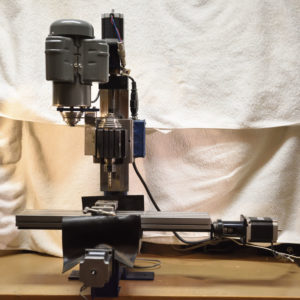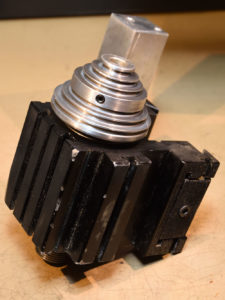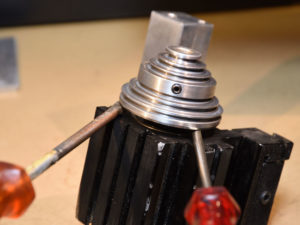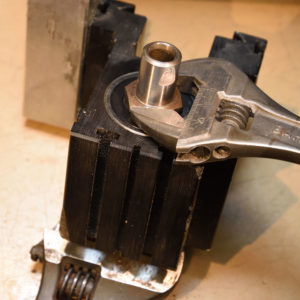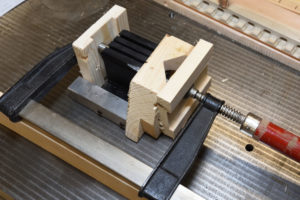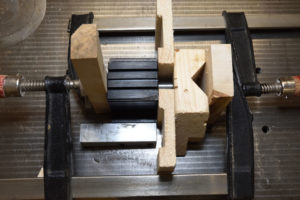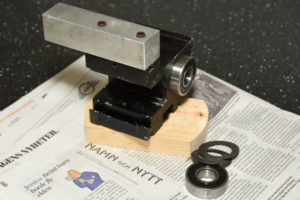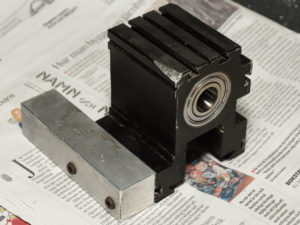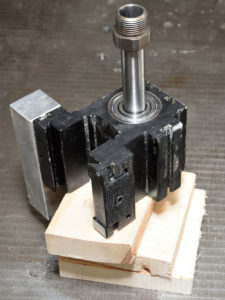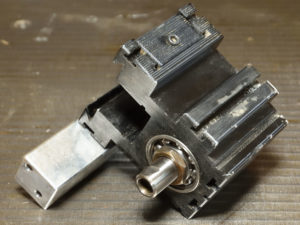This post from 2018-11-15 was updated on 2019-08-01.
Back in 2016, I did a blog post entry about podcasts about electronics. Some of the podcasts mentioned there are still going strong while some have disappeared and a few new ones have shown up, so it is time for an update:
I regularly listen to a number of podcasts and below is a list, along with some comments, of the electronics related ones.
I find that the podcasts provide inspiration, insight and knowledge about tools, projects, parts, companies, people and resources in the world of electronics. I first learned about many of the building blocks, components and development tools I use in my hobby projects (and sometimes professionally) through these podcasts.
The Amp Hour
RSS: http://feeds.feedburner.com/TheAmpHour
I guess this is the longest running electronics related podcast I know of, started in 2010. “The Amp Hour is a non-scripted off-the-cuff format show […]. It is the worlds largest and most respected electronics oriented radio show. Discussions range from hobbyist electronics to the state of the electronics industry, components, circuit design, and general on and off-topic rants.”
Chris Gammell and Dave Jones (of the EEVblog) chat weekly either with each other or guests about industry news, hacker/maker/open hardware stuff or other things mostly related to electronics. Chris is currently a cosultant and also teaches the online course Contextual Electronics while Dave is an opinionated and quite successful youtuber. If I need to pick a favorite electronics podcast, this is it.
Embedded
RSS: http://embedded.fm/episodes?format=rss
Started in 2013 this is another weekly show, but more geared towards embedded software than electronics, although some of the guests are more into electronics. Elecia and Christopher White discuss between themselves or with guests about “the how, why, and what of engineering, usually devices.” The guests include “makers, entrepreneurs, educators, and normal, traditional engineers.” Both Elecia and Christopher are embedded software consultants in Silicon Valley. Well worth a listen if you are into electronics or embedded software.
Unnamed Reverse Engineering Podcast
RSS: http://reverseengineering.libsyn.com/rss
This is new on the list since I just discovered it. The topic is primarily reverse engineering of electronics and software. The style is similar to The Amp Hour and Embedded and the content is equally interesting in my opinion. Episodes come out irregularly. In the first two years, 23 episodes have been published.
SolderSmoke Podcast
RSS: http://www.soldersmoke.com/soldersmoke.rss
SolderSmoke is mostly about home-brew HAM radio. Hosts Bill Meara, M0HBR, and Pete Juliano, N6QW, discuss their radio projects and issues they run into. This is the show for anyone who is interested in home-brew radio or perhaps HAM radio in general.
MacroFab’s Engineering Podcast
RSS: https://feeds.backtracks.fm/feeds/macrofab/macrofab-engineering-podcast/feed.xml
MacroFab describes the idea behind the company as “[…] to disrupt the contract manufacturing industry by developing a software driven approach to make it faster and easier than ever to bring new electronic products to market.” They seem to specialize in small volume PCBA manufacturing. The weekly podcast was started in 2016 and is hosted by Parker Dillmann and Stephen Kraig who are engineers at the company (except Stephen has left Macrofab, but remains a host of the show). They mostly talk enthusiastically about projects they are working on (they seem to do a lot of fun projects, often with unclear connection to the business) and discuss industry news. The program can be quite inspirational and does not feel like an ad for MacroFab.
A little warning might be in place. Of the podcasts listed here, I get the impression that this is the one on which the hosts are most likely to sound relatively sure about something that is utterly wrong. It seems to have gotten a little better over the years, but still this warning may be relevant.
Ontrack Podcast
RSS: http://podcast.altium.com/feed.xml
This podcast is new since the previous list.
Ontrack is a podcast produced by the EDA tool company Altium. The host Judy Warner is enthusiastic about the industry and brings on various guests from the PCB industry. Mostly it does not feel like ads for Altium (full disclosure: I have been using the Altium Designer ECAD program for many years and think it is great – for the most part) but instead is pretty interesting if you are involved in PCB design.
EETimes-on-Air
RSS: https://feeds.blubrry.com/feeds/aspencore.xml
This is the most recently started podcast on this list. It comes from EETimes and is very professionally produced. The production quality is in my opinion both a good thing and potentially not so good since the polished surface may perhaps come at the expense of depth and nuts-and-bolts content. I find a reasonable fraction of the news and analysis on the podcast to be of interest, although the engineering-to-business ratio is far lower on than it is for the other podcasts on this lists.
This is the way the podcast is described:
“EETimes On Air is the audial digest of EETimes, presenting a thirty-minute (editor’s note: rather 15 minute) deep-dive on the most compelling stories in electronics. Featuring subject matter experts from all corners of the industry, EETimes On Air lends elevated discourse to design engineers and tech industry professionals.”
PCB Tech Talk
RSS: http://pcbtechtalk.libsyn.com/rss
This podcast was started by Mentor Graphics in 2015 and has had a few periods of silence, although new episodes seem to be coming out as of now (2019). It contains some useful information and insights for PCB layout designers, but very much pushes Mentor’s tools and brand. It distinctly feels like it is produced by the marketing department of a traditional company and a lot of the content is clearly read from a script. I rarely bother to listen anymore since I do not use Mentor’s tools nowadays and currently do not see that happening in the near future either.
Shows that seem to have disappeared
The Spark Gap Podcast
RSS: http://thesparkgap.libsyn.com/rss
As of this writing, no new episode has come since 180131. I really hope it will come back as I highly enjoyed the show, but I will not hold my breath.
“A podcast discussing the nuts and bolts of embedded electronics, the systems that use them, and the community that surrounds them.” Started in 2014 and hosted by Karl and Corey. Episodes often have a specific theme and occasionally feature guests.
The Engineering Commons Podcast
RSS: http://feeds.feedburner.com/TheEngineeringCommonsPodcast?format=xml
After increasingly infrequent episodes, this podcast has as of this writing not come out since June 2018.
This podcast is only occasionally about electronics and more often about other aspects of engineering and being – or becoming – an engineer. It was co-founded in 2012 by Chris Gammell of The Amp Hour, but he left the program a few years ago. Today the show is hosted by the other co-founder Jeff Shelton (a mechanical engineer) as well as Adam (civil engineer), Brian (electrical engineer) and Carmen (also an electrical engineer).
